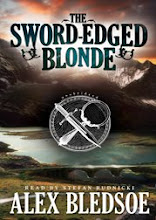John Culshaw (1924-1980) was a producer with Decca Records in the late 1950s, specializing in their classical music division. This was an era when records (by which I mean vinyl discs) were still played on “gramophones,” and the biggest technological breakthrough was something called “stereo.” In 1958, he embarked on something that had never been done before: recording Richard Wagner’s massive 15-hour opera cycle Der Ring des Nibelungen (The Ring of the Nibelungen) for the first time in its entirety. He chronicled this undertaking in his 1967 book Ring Resounding.

The book’s biggest surprise was the world in which it happened. Imagine a time when vinyl records were the only option for recorded music, and that the original form (a 12” disc that spun at 78 RPMs, limiting playback time to approximately 3-5 minutes) was the norm. That level of technology made it hugely impractical to record things like symphonies and operas, since the frequent side breaks would totally destroy the flow. How impractical? In 1902 Verdi’s opera Emani was released as a 40-disc set.
Then came the LP, or “long playing” record, which could handle a bit over thirty minutes per side. And at last the biggest breakthrough of all, the one that allowed the closest approximation of the true concert experience: stereo.
This was a hands-on era: the placement of microphones, the creation of sound effects, even the tape editing were done physically. A good ear was a priceless commodity, and no amount of then state-of-the-art equipment could take its place. Managing the artists involved was also a hands-on thing, and Culshaw goes into detail about his relationships with conductor Arnold Solti, legendary soprano Birgit Nilsson, and other opera notables who required alternating prods and coddles.
There’s no big scandal here, no huge tragedy or last-minute heroics. This is the story of men and women motivated by a love for great music and a belief that there was an audience for it out there. Recording each of the four operas in the cycle becomes its own adventure, pitting determination and artistry against the limitations of time and technology.
I’m not an opera fan. The only one I’ve seen was Verdi’s Aida, and I was so distanced from the story that, when Aida and Radames are entombed at the end, my first thought was that their air would last longer if they’d stop singing. But as I said, a well-told story can overcome even my inherent disinterest. Culshaw provides just the right details to bring you into the moment, so you feel the impact of each failure and triumph. It’s emphatically not a dull book, and like its title promises, continues resounding long after the final page is turned.














1 comment:
Der Ring des Nibelungen is a great story, and I watched the 1992 production of the Met on PBS. In fact, I recorded it on VHS, but the taps have since completely deteriorated.
I'm not a big fan of Verdi either, and I enjoy opera. Wagner and Mozart are good composers if you want to take the plunge. Mozart is my favorite.
This book looks like very cool reading.
Post a Comment